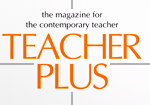Suma Vivekanandan
How can you help children construct their own knowledge of factors and multiples? Try these simple activities.
Category: Primary Pack
Understanding metrics
Narendran V
Metrics are a part of our everyday life. Whether it is to buy one kilogram of potatoes, or walk two kilometres to our destination, or fill a one litre of water, we have to use units of measurement. But do we ever tell our students how or why these standard units of measurement came about?
The notion of purity
Avneesh Shukla
How do we know what purity is? What are our reasons for classifying something as pure or impure? Take a peek into this science classroom and find out what the students learnt.
The ABCs of early learning
Surabhi Agarwal
Teaching is not easy – especially when it comes to preschool children. This can be ascribed to more than a few reasons. For some of the children it is the first time they interact with peers, pedagogical practices that work well with elder children may not work here, visuals are crucial and so on. So, what works with these children aged 3 to 6?
Table patterns
Neeraj Naidu
Learning the multiplication tables is an important ritual in the math classroom. After all it is one of the necessary tools to crack math problems! So teachers leave no stone unturned to ensure that their students can sing the tables at least up to 20. But why are we limiting the multiplication tables to simply by hearting them? Here is a fresh perspective on the much loved multiplication tables.
Putting some teeth into learning
Archana Dwivedi
Flat teeth, sharp teeth, crooked teeth, teeth with gaps in between. What do our teeth look like? Why are our teeth shaped the way they are? How many teeth do we have in our mouth? Here’s how this teacher introduced teeth in her classroom.
Draw what’s inside your body!
Meena Kharatmal
The human body is an amazing thing and how it works makes for an interesting topic and a fascinating lesson. However, when it comes to teaching children about the human body, it is important to check their prior knowledge. Most children may be aware of the organ systems as a whole but they may not know how the systems are connected and how they work to keep us healthy. Through a drawing-based classroom activity, teachers can get an idea of any pre-conceived notions that children may have and it will also help children stay motivated and excited.
Getting on ‘board’ for social studies
Shalini Sabikhi
Board games are a popular pastime for children and adults alike. What if we device board games that will also help us learn? It will certainly add some fun to learning.
Learning math through inquiry
Richa Pandey
How can teachers come up with a strategy to engage children in the learning process, specifically with math? Math teaching lends itself to an inquiry- based approach which involves investigating a problem, making conjectures and arriving at a solution. In this approach, learners ask questions, explore their own curiosity and are able to connect their learning to the real world. A teacher shares her experience.
Putting numbers in their place
Suma Vivekanandan
The place and face value of numbers is a confusing concept for little children. Try these simple ideas in the classroom to help them understand the concept.
